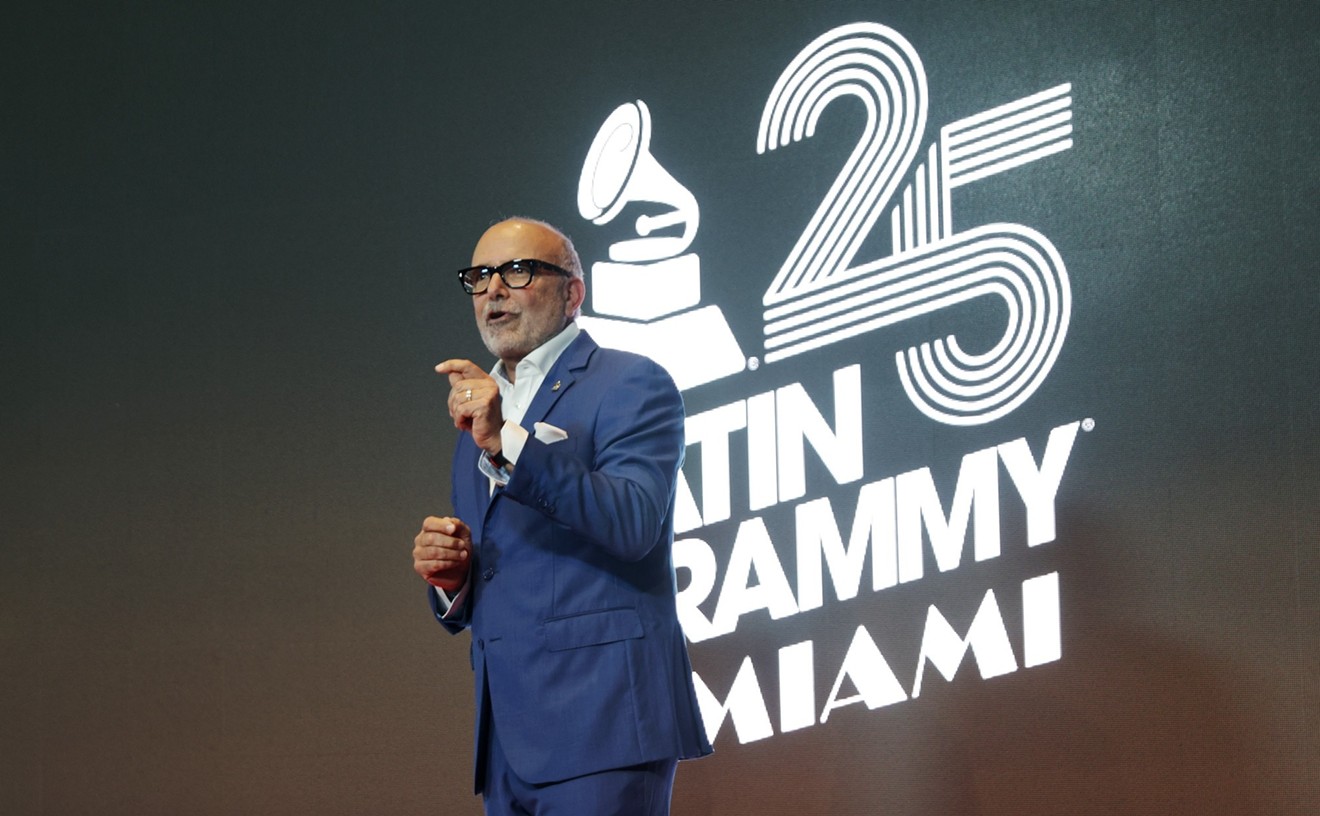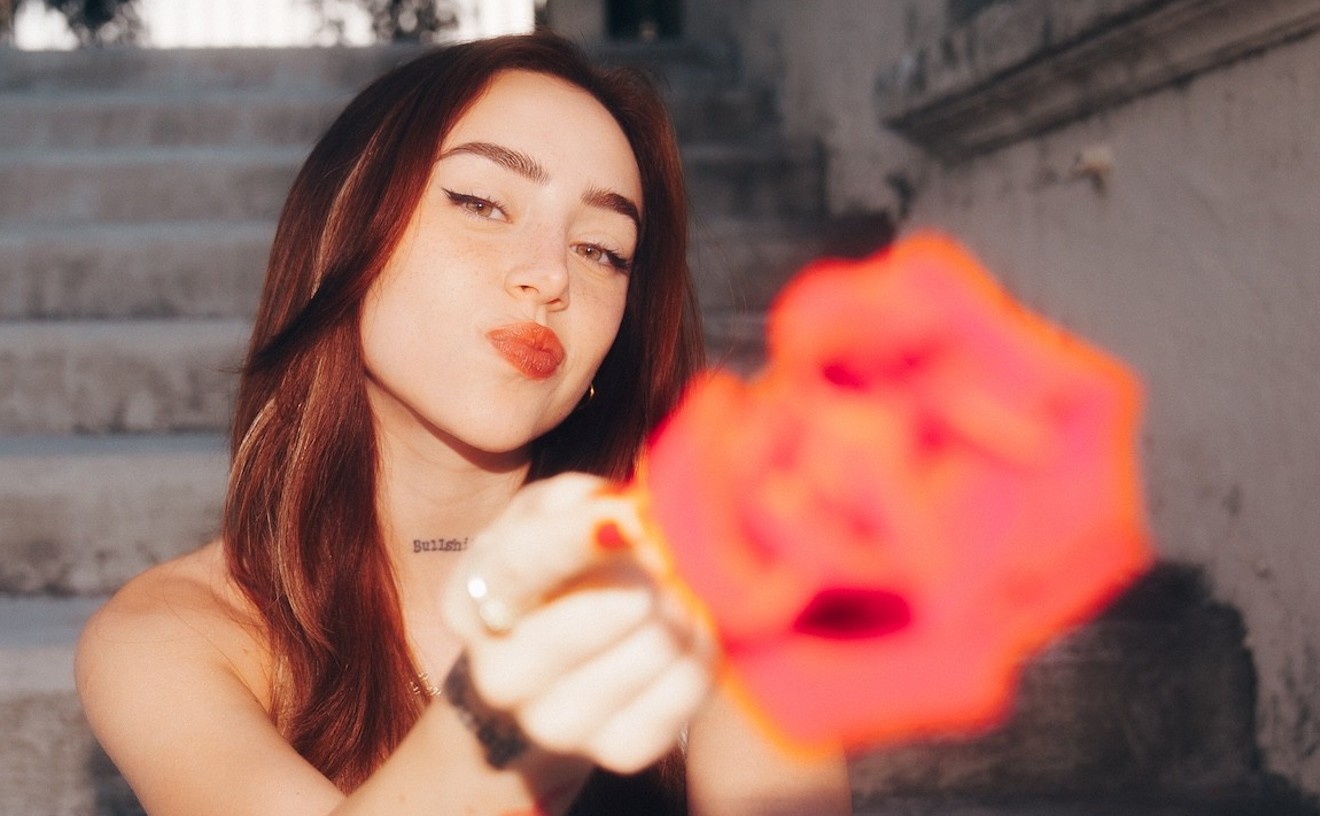Music vet and New Times scribe Lee Zimmerman shares stories of memorable rock 'n' roll encounters that took place in our local environs. This week: Catching concerts in all kinds of places
In 2010, South Florida boasts an abundance of clubs and venues that host live music. However, that wasn't always the case due to logistical reasons and a lack of proper venues. Happily, that's no longer the problem. The
BankAtlantic Center, Pompano Beach Amphitheatre, the Broward Center, Cruzan Amphitheatre, and Seminole Hard Rock Live are
among many spots able to satisfy the demands of big name headliners. Likewise, clubs
such as Revolution, the Culture Room, Respectable Street, Churchill's and dozens of other intimate outlets throughout the tri-county
area entice the up and coming acts with strong, specific followings.
In the '70s, '80s and '90s, my musical outings took me to both out of the way venues and larger auditoriums and arenas that were, to put it mildly, nothing more than primitive pits where the seating was non-existent and the audience was forced to fend for itself when it came to jostling for a view. Two places that fit that description come immediately to mind -- the Sportatorium and Pirate's World -- each of which was situated in what was then the hinterlands of undeveloped West Broward. Their remote locations meant they could only be reached by a single stretch of highway, leading to inevitable traffic jams both to and from.
And while both venues hosted some classic concerts -- I caught Bob Seger, Iron Maiden and Elton John at the Sportatorium, while Emerson Lake & Palmer, Ten Years After, Badfinger and the Faces lured me to Pirate's World -- they made going to shows a real chore due to the less than inviting conditions. In fact, my friends and I referred to the Sportatorium as the "Vomitorium." When I was a promotion rep, I used to dread it every time my acts played there, because inevitably I'd have to wade through the drunken masses in order to make it to the box office, where nine times out of ten, my tickets and/or backstage passes wouldn't be waiting at will call because someone in the back office screwed up the delivery. Even now, when I go to a box office to claim my tickets for a concert review, I retain a certain dread that the tickets won't be where they were arranged.
Throughout the years, there were various attempts to offer better options. The Sunrise Musical Theater was one of the more successful sites for many years, and they had a fine dining facility as well. In fact, when I worked with Hard Rock Café in Miami's Bayside, we catered a meal for the reunited Traffic, which featured the band's founders, Steve Winwood and the late Jim Capaldi. It was great to reconnect with Winwood, given that he was my very first interview backstage at the old Jai Alai Fronton, once another major concert draw. Over the years, I caught Bruce Springsteen, Steve Martin, Crosby and Nash, King Crimson and dozens of other acts there while they were still in their infancy. In fact, the Fronton, the old Orange Bowl and the Miami Baseball Stadium served double purposes, as sports arenas that also hosted concerts due to the fact that there weren't many other options available.
During the '90s, more appropriate places started to spring up, among them, chief among them, the Stephen Talkhouse on South Beach. It wasn't a very large location, so in general, it was first come, first serve as far as seating was concerned. Still, it drew a number of big names like Roger McGuinn, the Mavericks, Country Joe McDonald and a host of artists that leaned towards blues and folk. I recall being there one night and seeing Jorma Kaukonen, ex member of the Jefferson Airplane and Hot Tuna, hanging out by the bar a week before his own show was slated. He was animated and personable, freely mingling and shedding all rock star airs. Sadly though, the Talkhouse didn't fare as well as its original Long Island locale. The owner was horrifically attacked in the back alley after a show one night, and it closed its doors not long after.
Billboard Live, an elaborate, upscale South Beach venture also attempted to make a go of it not long after. Opened under the auspices of the musical business trade of the same name, it promised to bring in big names and world class events. I'm not sure what caused its demise, but after a few high profile offerings, it also shut down and its operators abandoned the area entirely.
When I worked at Hard Rock Café in Bayside in the early '90s, we started an ongoing concert series, bring in big acts like Hootie and the Blowfish and Matchbox 20, who were still considered a Florida band at the time. We didn't have a real dressing room, and the seating was confined to the dining area, but those were some of the most entertaining shows I remember. Local bands like the late, great Goods also had opportunity to perform there and often times I'd emcee. The old Yesterday and Today Records in South Miami also hosted live performances by local bands. In fact, in-store appearances weren't uncommon; I recall catching the Bee Gees doing a special set at Spec's in Coral Gables, a one-off showcase that was rare but remarkable.
Thankfully, a regular stream of big name acts consistently comes to town these days, and the places they play are worthy of their presence. Still, I must admit I remember quite fondly the times when South Florida was the touring circuit's final frontier










